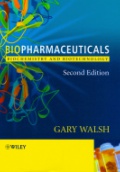Aluminium Alloys: New Trends in Fabrication & Applications
Leroy Sidney
ISBN: 9781681173122
Vydavatelství: Scitus Academics
Rok vydání: 2017
Vazba: Hardback
Počet stran: 274
Původní cena: 5 312 Kč
Výstavní cena:
4 515 Kč(t.j. po slevě 15%)
(Cena je uvedena včetně 10% DPH)
Katalogová cena: 141.5 GBP
Nárok na
dopravu zdarma
Termín dodání na naši pobočku v Brně je přibližně 3-4 týdny.
This book entitled Aluminium Alloys - New Trends in Fabrication and Applications, emphasizes on future innovations and new developments in aluminium alloys. Aluminium is the worlds most abundant metal and is the third most common element, comprising 8% of the earths crust. The versatility of aluminium makes it the most widely used metal after steel. Although aluminium compounds have been used for thousands of years, aluminium metal was first produced around 170 years ago. Aluminium alloys have undergone a dramatic transformation in areas of extrusion, machining, welding, heat treatment, structural changes, created by ultra fine particles and enhanced corrosion resistance. Hence, these alloys have made rapid gains in automotive and space industry. Aluminium alloys are alloys in which aluminium (Al) is the predominant metal. The typical alloying elements are copper, magnesium, manganese, silicon, tin and zinc. There are two principal classifications, namely casting alloys and wrought alloys, both of which are further subdivided into the categories heattreatable and non-heat-treatable. About 85% of aluminium is used for wrought products, such as rolled plate, foils and extrusions. Cast aluminium alloys yield cost-effective products due to the low melting point, although they generally have lower tensile strengths than wrought alloys. The most important cast aluminium alloy system is AlSi, where the high levels of contribute to give good casting characteristics. Aluminium alloys are widely used in engineering structures and components where light weight or corrosion resistance is required. The properties of the various aluminium alloys has resulted in aluminium being used in industries as diverse as transport, food preparation, energy generation, packaging, architecture, and electrical transmission applications. Depending upon the application, aluminium can be used to replace other materials like copper, steel, zinc, tin plate, stainless steel, titanium, wood, paper, concrete and composites. The novel role of aluminium alloys in photovoltaic cells and concentrated solar power has been comprehensively described in the context of corrosion and the aggressive environment to which they may be exposed.
